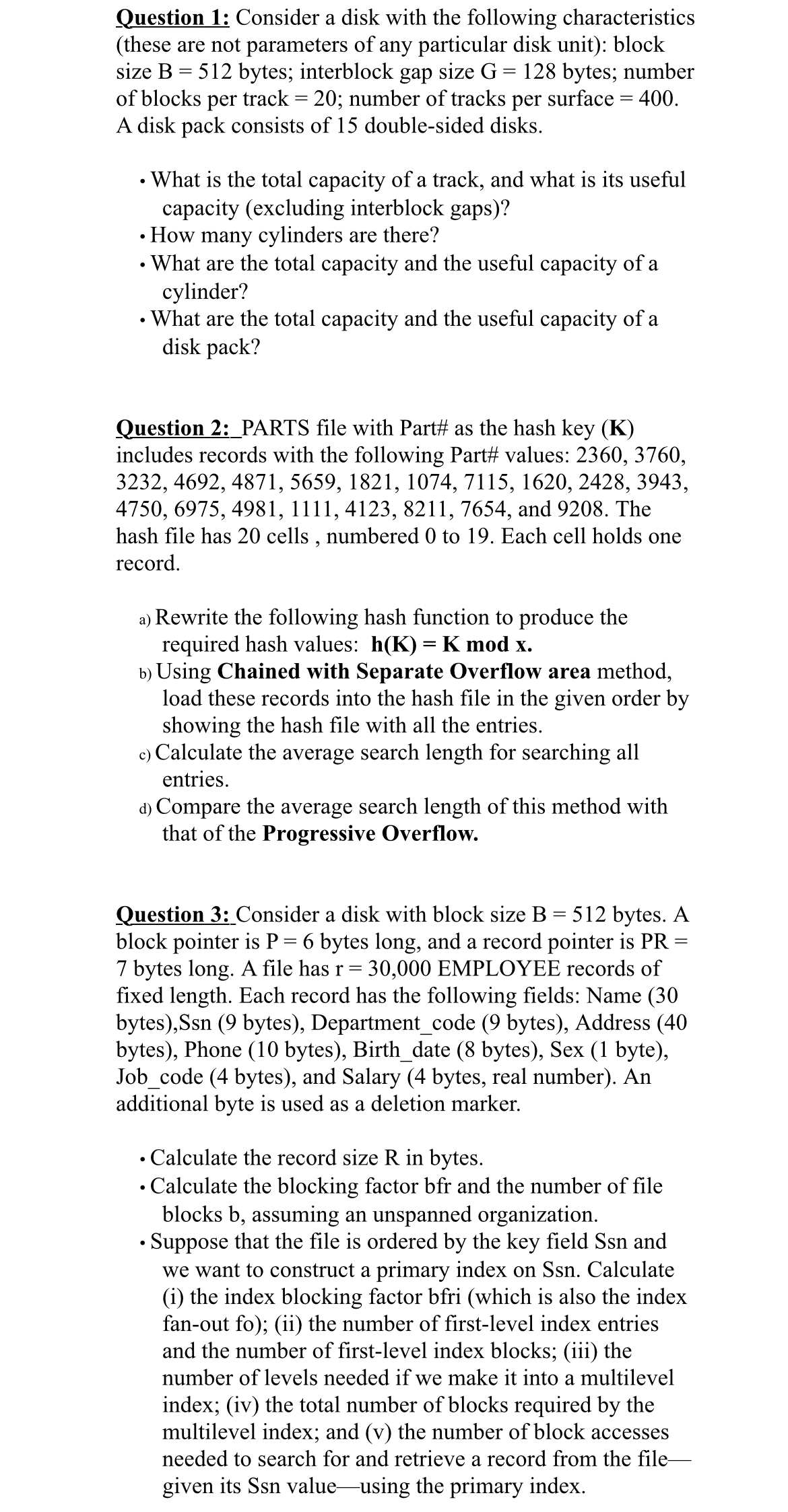Answered step by step
Verified Expert Solution
Question
1 Approved Answer
Question 1 : Consider a disk with the following characteristics ( these are not parameters of any particular disk unit ) : block size B
Question : Consider a disk with the following characteristics
these are not parameters of any particular disk unit: block
size bytes; interblock gap size bytes; number
of blocks per track ; number of tracks per surface
A disk pack consists of doublesided disks.
What is the total capacity of a track, and what is its useful
capacity excluding interblock gaps
How many cylinders are there?
What are the total capacity and the useful capacity of a
cylinder?
What are the total capacity and the useful capacity of a
disk pack?
Question :PARTS file with Part# as the hash key K
includes records with the following Part# values:
and The
hash file has cells numbered to Each cell holds one
record.
a Rewrite the following hash function to produce the
required hash values: Kmodx.
b Using Chained with Separate Overflow area method,
load these records into the hash file in the given order by
showing the hash file with all the entries.
c Calculate the average search length for searching all
entries.
d Compare the average search length of this method with
that of the Progressive Overflow.
Question : Consider a disk with block size B bytes. A
block pointer is bytes long, and a record pointer is
bytes long. A file has EMPLOYEE records of
fixed length. Each record has the following fields: Name
bytesSsn bytes Departmentcode bytes Address
bytes Phone bytes Birthdate bytes Sex byte
Jobcode bytes and Salary bytes, real number An
additional byte is used as a deletion marker.
Calculate the record size in bytes.
Calculate the blocking factor bfr and the number of file
blocks b assuming an unspanned organization.
Suppose that the file is ordered by the key field Ssn and
we want to construct a primary index on Ssn Calculate
i the index blocking factor bfri which is also the index
fanout fo; ii the number of firstlevel index entries
and the number of firstlevel index blocks; iii the
number of levels needed if we make it into a multilevel
index; iv the total number of blocks required by the
multilevel index; and v the number of block accesses
needed to search for and retrieve a record from the file
given its Ssn valueusing the primary index.

Step by Step Solution
There are 3 Steps involved in it
Step: 1

Get Instant Access to Expert-Tailored Solutions
See step-by-step solutions with expert insights and AI powered tools for academic success
Step: 2

Step: 3

Ace Your Homework with AI
Get the answers you need in no time with our AI-driven, step-by-step assistance
Get Started


